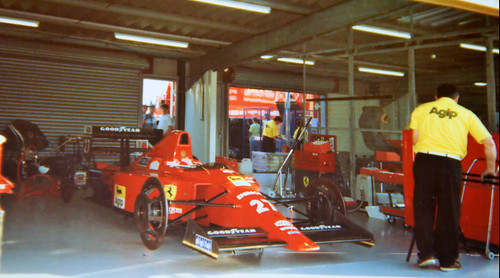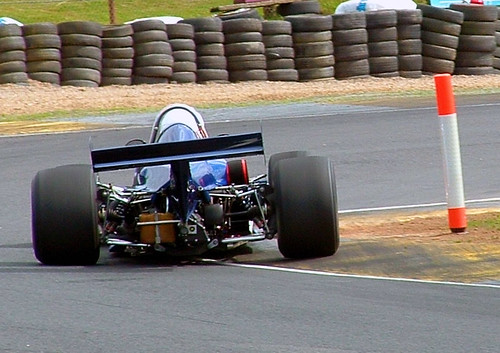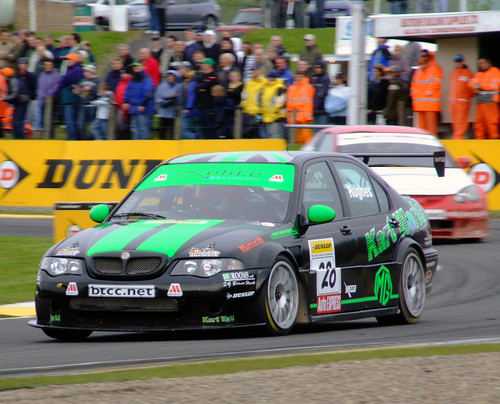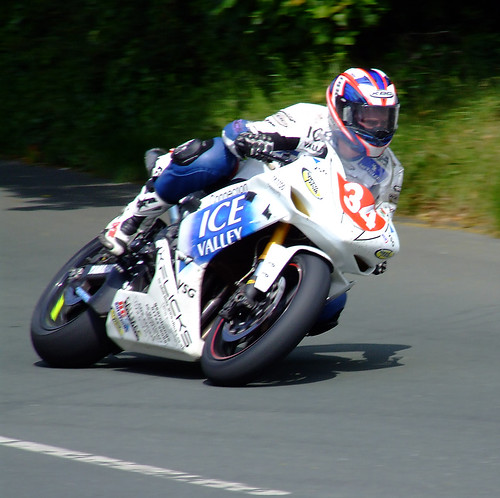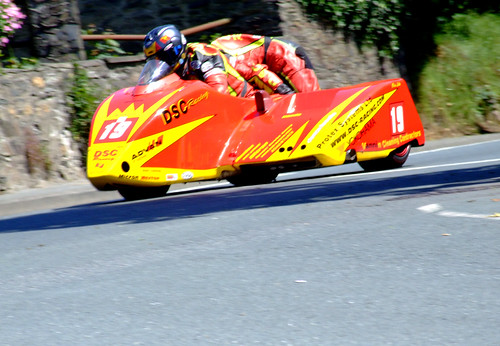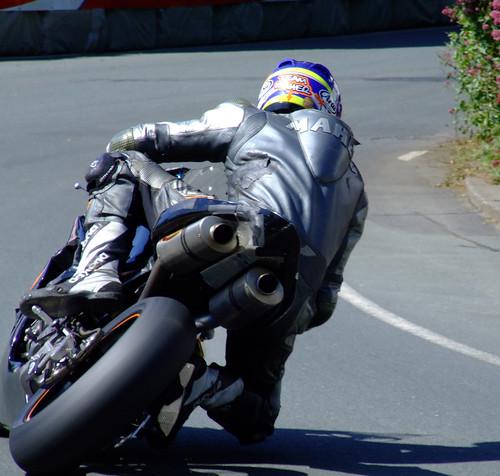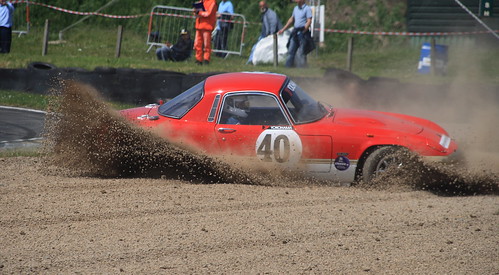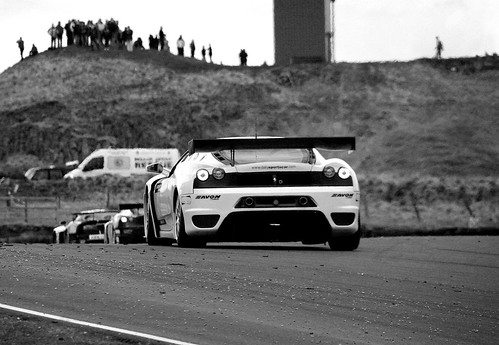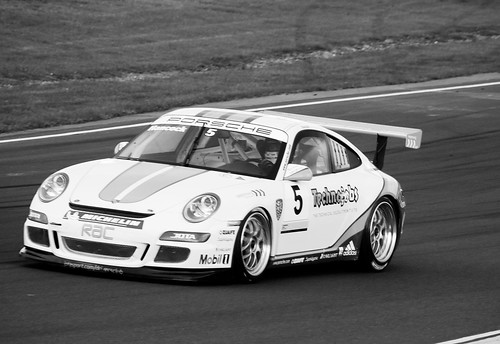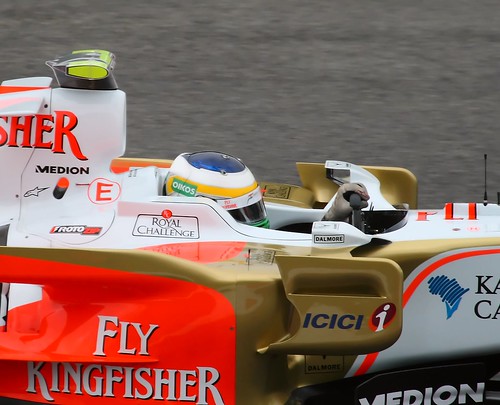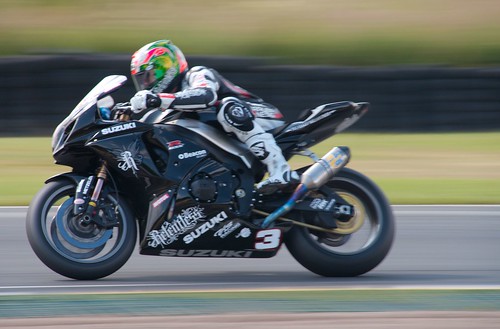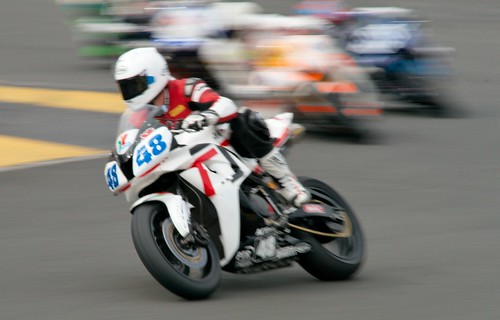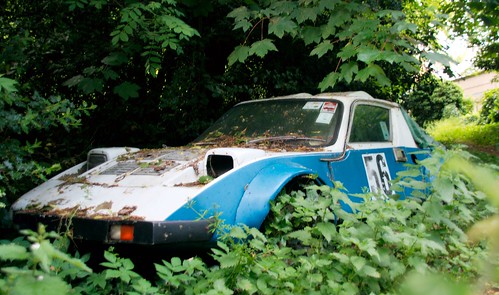The Rise, Fall, Resurrection and Downfall of Donington Park
Some time back, I wrote a piece on my memories of Oulton Park, the nearest race track to my childhood home and a place at which I spent a good many Sunday afternoons as a child, watching assorted clubman racers getting to grips with the deceptively difficult Lodge/Deer Leap section at the end of the lap. Oulton Park will probably always be my favourite of the great British parkland circuits, but it was not the first.
That honour belongs to Donington Park, situated in nearby Derbyshire. That circuit first saw action in 1928, though it remained a motorcycle dirt track until local motorcycle racer Fred Craner organised the creation of a sealed-surface permanent race circuit in 1933. Until then, the only permanent race circuit in the UK was the banked oval at Brooklands and the idea of circuit racing did not yet really exist in Britain. Donington came to be indelibly associated with the awe-inspiring battles between the Auto Union and Mercedes 'silver arrows' of the pre-war era. This chapter of motorsport history will forever be tainted by the unavoidable truth that both teams were part of a Nazi propaganda operation, intended to underline German engineering superiority to a watching world. Leaving that aside for a moment, though, one can only wonder at the impact that the sight of a 600BHP+ 6 litre supercharged Grand Prix car must have had when they first appeared on British soil for the 1937 Grand Prix at Donington.
In his article on the 1937 race, When the Germans Came to Donington, Rodney Walkerley wrote "A few moments later, Manfred von Brauchitsch, red helmeted, brought a great, silver projectile snaking down the hill, and close behind, his teammate Rudolf Caracciola, then at the height of his great career. The two cars took the hairpin, von Brauchitsch almost sideways, and rocketed away out of sight with long plumes of rubber smoke trailing from their huge rear tyres, in a deafening crash of sound. The startled Pressmen gazed at each other, awe-struck. "Strewth," gasped one of them, "so that's what they're like!""
To put this in perspective, it should be remembered that it would be only with the advent of the turbo era in the early 1980s that Grand Prix cars would again equal, and eventually far surpass, the horsepower being generated by these beasts, and by that time, suspension, chassis and tyre technology had progressed a long way in making such power outputs relatively safe and controllable. Think, if you will, of a GP2 car on skinny crossply tyres, drum brakes and no aerodynamic downforce to speak of. If the intent behind the Nazis' race programme was shock and awe, it succeeded...
Of course, days before the 1939 British Grand Prix was due to be held, the Nazis went from fighting a propaganda war to a land war and Donington was requisitioned by the British military for use as a supplies depot during the war. And for the next 30 years, the circuit lay derelict, until being bought in 1971 by Midlands construction millionaire, Tom Wheatcroft, a race enthusiast who had already used his considerable fortune to set up a Formula 2 team and build up a collection of historic racing cars (which later formed the backbone of the Donington Collection, the largest single collection of Grand Prix cars in the world). Over the next six years, the circuit was completely refurbished and, despite a last-minute attempt to scupper the event by local ramblers claiming the circuit cut across a right of way, the first race on the new circuit took place on 27 May 1977.
The new circuit followed the same approximate route as the original 1933 layout, but omitted the long drag down to the old Melbourne hairpin where Wheatcroft had watched the Mercedes and Auto Unions as a teenager, once remarking "You had to be there to know what it was like. The W125 Mercs and the V16 Auto Unions were doing 170mph by halfway down the straight. The noise and the smell and the speed – we hadn't seen anything like it before." The highlight of the new circuit was the fast downhill sweepers of the Craner Curves, which led down to the big braking zone of the Old Hairpin, both fairly closely modeled on the 1933 circuit. Other sections, like the slightly off camber Druids corner, have elements to recommend them, but it is the Hollywood/Craner/Old Hairpin section which makes the circuit.
In 1985, the 'Melbourne Loop', which extended part of the way down the hill at the back of the circuit towards the old Melbourne hairpin was introduced to bring the circuit up to the required length for Grand Prix motorcycle racing, which Donington went on to host between 1987 and 2009 after which it finally moved to Silverstone.
If Oulton Park is associated in my memory with the Gold Cup F3 race and club saloon racing, then it is Group C sportscar racing and the latter day 'silver arrows' of Peter Sauber's Mercedes sportscar team which most immediately spring to mind. They were dominant at the two WSC races I saw there in 1989 and 1990, in much the same manner as the original Silver Arrows had been fifty years previously. The 1989 race which I watched on a bright summers day from the banking above the Craner Curves I still remember for the wealth of beautiful machinery that cascaded down to the Old Hairpin in the sun, Gordon Spice's privateer sportscars, the Lola-Nissans, a brace of Porsche 962s and the short-lived Proteus Aston Martins. A more beautiful collection of racing cars I don't recall ever having seen.
Aside from the spectator banking above the Craner Curves and the Old Hairpin, the circuit's other obvious spectator viewing point is at the back of the Esses, which gave you line of sight to not one but two of the circuit's main overtaking points, under braking for the Esses and for the desperately slow final hairpin at Goddards which leads onto the pit straight. Not places that a racing car looks especially impressive when circulating at speed on its own, but a great place to watch racing from, and consequently a good place to watch touring car races especially.
Over the years, I saw big-banger Group A Sierra RS500s, close fought battles between various cars from the early years of the 2 litre supertourer era, the 1987 Donington 500km World Touring Car race which seemingly nobody wanted to win, as one after another of the major contenders dropped out, finally handing victory to Roberto Ravaglia and Eric Van De Poele's BMW M3 after the A8 Sierras and Nissan Skylines all failed to go the distance. Another touring car race which sticks in my memory was the visit paid by the German Touring Car Championship some time in the early 90s on a very cold October day, where I remember being sat supping ultra-hot 'rocket fuel' curried soup as my fingers went numb while the big V8 Audis of Frank Biela and Hans Stuck dominated proceedings, perhaps appropriate as Audi began life as the other 'silver arrows' team, Auto Union.
My two most vivid memories of Donington Park, though, come from opposite ends of the racing spectrum. The first, on a hot summer's day, came watching club racing at the bottom of the Craner Curves, and in particular, a race for what were, even then, ancient Renault 5TLs, primitive hatchbacks barely worthy of the designation 'racing car', which had the mother of all battles over ten laps of the shorter Donington circuit, and who came four or even five abreast down the hill, swapping paint and positions every lap, showing that great racing emphatically does not require great racing cars.
The other came, I think, five years later, on a cold, damp Easter weekend at Donington's one and only post-war Grand Prix. I was a huge fan, at the time, of the mercurial Brazilian Ayrton Senna, but things did not look good for him that day. The Williams had locked out the front row and Senna was only fourth, behind the Benetton of Michael Schumacher. Except...except it was raining, and when Senna was around, rain was always a game-changer. And so it turned out to be. Despite a slow start which dropped him momentarily to fifth, he was diving down the inside of Karl Wendlinger's Sauber to grab third by the time the field got to where I was standing, by the Old Hairpin. A lap later, he was clear of both Williams, and as the afternoon wore on, he demolished the field, lapping all bar Damon Hill, who trailed a distant 1m 23s behind on what many regard as Senna's day of days, though the man himself never rated it as highly as his win eight years earlier in the wet at Estoril, as that day he did not have the benefits of traction control.
Now, of course, Donington lies derelict, the unintentional casualty of Bernie Ecclestone's high stakes game of poker with the BRDC over the future of the British Grand Prix and Simon Gillett's dreams of a debenture funded F1 race at Donington. It is a terrible shame that, at the time of Tom Wheatcroft's death late last year, his life's work lay in ruins. His son, Kevin Wheatcroft, to whom ownership of the circuit has reverted following the collapse of Donington Ventures Limited, says they are keen to ensure that Donington remains a working race circuit, but the sad truth is that there is probably vastly more money to be made from turning the circuit over to property developers and as such, we may have seen the last of a race track which hosted some great races, both before World War 2, and in its later, modern guise. I hope I'm wrong.
That honour belongs to Donington Park, situated in nearby Derbyshire. That circuit first saw action in 1928, though it remained a motorcycle dirt track until local motorcycle racer Fred Craner organised the creation of a sealed-surface permanent race circuit in 1933. Until then, the only permanent race circuit in the UK was the banked oval at Brooklands and the idea of circuit racing did not yet really exist in Britain. Donington came to be indelibly associated with the awe-inspiring battles between the Auto Union and Mercedes 'silver arrows' of the pre-war era. This chapter of motorsport history will forever be tainted by the unavoidable truth that both teams were part of a Nazi propaganda operation, intended to underline German engineering superiority to a watching world. Leaving that aside for a moment, though, one can only wonder at the impact that the sight of a 600BHP+ 6 litre supercharged Grand Prix car must have had when they first appeared on British soil for the 1937 Grand Prix at Donington.
In his article on the 1937 race, When the Germans Came to Donington, Rodney Walkerley wrote "A few moments later, Manfred von Brauchitsch, red helmeted, brought a great, silver projectile snaking down the hill, and close behind, his teammate Rudolf Caracciola, then at the height of his great career. The two cars took the hairpin, von Brauchitsch almost sideways, and rocketed away out of sight with long plumes of rubber smoke trailing from their huge rear tyres, in a deafening crash of sound. The startled Pressmen gazed at each other, awe-struck. "Strewth," gasped one of them, "so that's what they're like!""
To put this in perspective, it should be remembered that it would be only with the advent of the turbo era in the early 1980s that Grand Prix cars would again equal, and eventually far surpass, the horsepower being generated by these beasts, and by that time, suspension, chassis and tyre technology had progressed a long way in making such power outputs relatively safe and controllable. Think, if you will, of a GP2 car on skinny crossply tyres, drum brakes and no aerodynamic downforce to speak of. If the intent behind the Nazis' race programme was shock and awe, it succeeded...
Of course, days before the 1939 British Grand Prix was due to be held, the Nazis went from fighting a propaganda war to a land war and Donington was requisitioned by the British military for use as a supplies depot during the war. And for the next 30 years, the circuit lay derelict, until being bought in 1971 by Midlands construction millionaire, Tom Wheatcroft, a race enthusiast who had already used his considerable fortune to set up a Formula 2 team and build up a collection of historic racing cars (which later formed the backbone of the Donington Collection, the largest single collection of Grand Prix cars in the world). Over the next six years, the circuit was completely refurbished and, despite a last-minute attempt to scupper the event by local ramblers claiming the circuit cut across a right of way, the first race on the new circuit took place on 27 May 1977.
The new circuit followed the same approximate route as the original 1933 layout, but omitted the long drag down to the old Melbourne hairpin where Wheatcroft had watched the Mercedes and Auto Unions as a teenager, once remarking "You had to be there to know what it was like. The W125 Mercs and the V16 Auto Unions were doing 170mph by halfway down the straight. The noise and the smell and the speed – we hadn't seen anything like it before." The highlight of the new circuit was the fast downhill sweepers of the Craner Curves, which led down to the big braking zone of the Old Hairpin, both fairly closely modeled on the 1933 circuit. Other sections, like the slightly off camber Druids corner, have elements to recommend them, but it is the Hollywood/Craner/Old Hairpin section which makes the circuit.
In 1985, the 'Melbourne Loop', which extended part of the way down the hill at the back of the circuit towards the old Melbourne hairpin was introduced to bring the circuit up to the required length for Grand Prix motorcycle racing, which Donington went on to host between 1987 and 2009 after which it finally moved to Silverstone.
If Oulton Park is associated in my memory with the Gold Cup F3 race and club saloon racing, then it is Group C sportscar racing and the latter day 'silver arrows' of Peter Sauber's Mercedes sportscar team which most immediately spring to mind. They were dominant at the two WSC races I saw there in 1989 and 1990, in much the same manner as the original Silver Arrows had been fifty years previously. The 1989 race which I watched on a bright summers day from the banking above the Craner Curves I still remember for the wealth of beautiful machinery that cascaded down to the Old Hairpin in the sun, Gordon Spice's privateer sportscars, the Lola-Nissans, a brace of Porsche 962s and the short-lived Proteus Aston Martins. A more beautiful collection of racing cars I don't recall ever having seen.
Aside from the spectator banking above the Craner Curves and the Old Hairpin, the circuit's other obvious spectator viewing point is at the back of the Esses, which gave you line of sight to not one but two of the circuit's main overtaking points, under braking for the Esses and for the desperately slow final hairpin at Goddards which leads onto the pit straight. Not places that a racing car looks especially impressive when circulating at speed on its own, but a great place to watch racing from, and consequently a good place to watch touring car races especially.
Over the years, I saw big-banger Group A Sierra RS500s, close fought battles between various cars from the early years of the 2 litre supertourer era, the 1987 Donington 500km World Touring Car race which seemingly nobody wanted to win, as one after another of the major contenders dropped out, finally handing victory to Roberto Ravaglia and Eric Van De Poele's BMW M3 after the A8 Sierras and Nissan Skylines all failed to go the distance. Another touring car race which sticks in my memory was the visit paid by the German Touring Car Championship some time in the early 90s on a very cold October day, where I remember being sat supping ultra-hot 'rocket fuel' curried soup as my fingers went numb while the big V8 Audis of Frank Biela and Hans Stuck dominated proceedings, perhaps appropriate as Audi began life as the other 'silver arrows' team, Auto Union.
My two most vivid memories of Donington Park, though, come from opposite ends of the racing spectrum. The first, on a hot summer's day, came watching club racing at the bottom of the Craner Curves, and in particular, a race for what were, even then, ancient Renault 5TLs, primitive hatchbacks barely worthy of the designation 'racing car', which had the mother of all battles over ten laps of the shorter Donington circuit, and who came four or even five abreast down the hill, swapping paint and positions every lap, showing that great racing emphatically does not require great racing cars.
The other came, I think, five years later, on a cold, damp Easter weekend at Donington's one and only post-war Grand Prix. I was a huge fan, at the time, of the mercurial Brazilian Ayrton Senna, but things did not look good for him that day. The Williams had locked out the front row and Senna was only fourth, behind the Benetton of Michael Schumacher. Except...except it was raining, and when Senna was around, rain was always a game-changer. And so it turned out to be. Despite a slow start which dropped him momentarily to fifth, he was diving down the inside of Karl Wendlinger's Sauber to grab third by the time the field got to where I was standing, by the Old Hairpin. A lap later, he was clear of both Williams, and as the afternoon wore on, he demolished the field, lapping all bar Damon Hill, who trailed a distant 1m 23s behind on what many regard as Senna's day of days, though the man himself never rated it as highly as his win eight years earlier in the wet at Estoril, as that day he did not have the benefits of traction control.
Now, of course, Donington lies derelict, the unintentional casualty of Bernie Ecclestone's high stakes game of poker with the BRDC over the future of the British Grand Prix and Simon Gillett's dreams of a debenture funded F1 race at Donington. It is a terrible shame that, at the time of Tom Wheatcroft's death late last year, his life's work lay in ruins. His son, Kevin Wheatcroft, to whom ownership of the circuit has reverted following the collapse of Donington Ventures Limited, says they are keen to ensure that Donington remains a working race circuit, but the sad truth is that there is probably vastly more money to be made from turning the circuit over to property developers and as such, we may have seen the last of a race track which hosted some great races, both before World War 2, and in its later, modern guise. I hope I'm wrong.
Labels: donington park, silver arrows, tom wheatcroft
